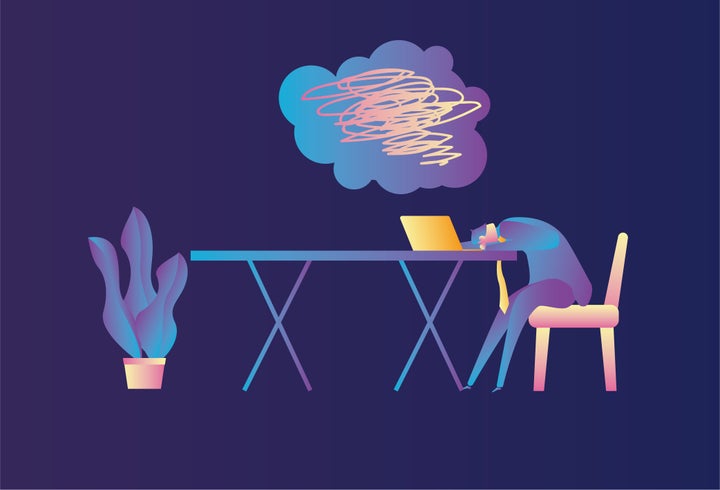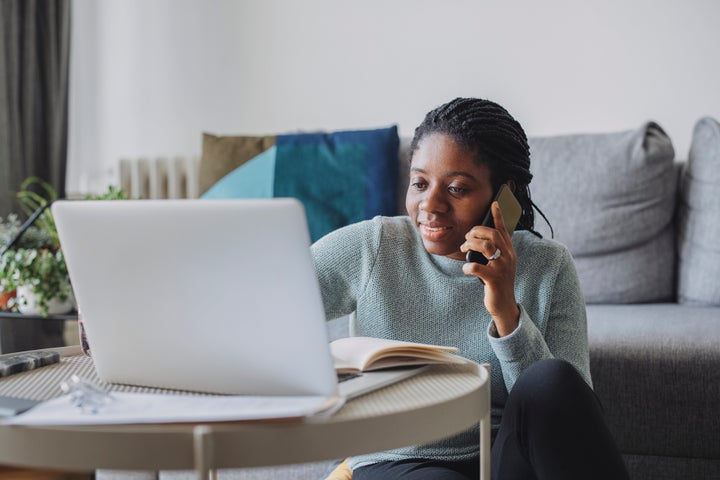If I had my way on weekdays, I’d wake up at 10 a.m. and spend my morning hours reading whatever fiction book I fell asleep to the night before and catching up on the news. Then I’d eat something before idly making my way over to my laptop to get my actual work done.
Forget the early bird getting the worm; I do my best work after lunch. Based on personal circadian rhythms, some people just naturally focus better in the late afternoons or evening, and I’m one of them. Two p.m. has been prime time for me lately.
Alas, I have a 9-5 job and don’t usually have the luxury of letting those morning hours go to “waste.” For most of us, there’s usually work to be accomplished as soon as we log into our email, which is unfortunate if you aren’t feeling creatively juiced up until around noon or much later.
“Working from home has definitely helped some people uncover their natural work and energy patterns,” said Rashelle Isip, a time management coach and productivity consultant. “With remote work, there’s no morning or evening commutes or interacting with others in person at the office. You may find yourself more relaxed in this environment and more aware of your natural flow.”
It’s not just natural energy patterns and circadian cycles at play here, though. Sometimes Parkinson’s law is at work, too. It’s the idea that work expands so as to fill the time allotted. In the morning, we feel invincible, like we have all the time in the world to tackle our to-do list, so we may not do it. When 2 p.m. rolls around, things get dire. We kick into high gear and accomplish all our tasks with the limited time left.
“There’s a sudden sense of, oh, this day isn’t going to be endless,” said Laura Vanderkam, author of “Off the Clock: Feel Less Busy While Getting More Done.”
Plus, she said, by 2 p.m. or so, you’re likely free from the onslaught of Slack notifications and Gchat pings from earlier in the day.
“Those afternoon hours are often hours when you’re less likely to be interrupted as other people aren’t checking things off their lists anymore that require your input since they already hit you up earlier in the day,” Vanderkam said.

Regardless of the culprit ― Parkinson’s law, your natural circadian rhythm, working from home ― if you’re categorically Not A Morning Person, you probably want to change your game to get more done and stress less.
But you actually don’t need to change it up too much, Isip said. And you certainly don’t have to become an early bird who goes hard at 10 a.m.
“There’s a common misconception that being productive means performing tasks in the same manner, at the same speed, with the same level of focus and attention, but there are nuances when it comes to doing one’s work,” she said.
If you’re self-employed or a freelancer, by all means, continue doing what works for you best and stop questioning if it’s common or normal. But if you have a boss with a set of different expectations, you may need or want to make some small tweaks to be more productive before the afternoon rolls around.
Below, time management experts offer their best advice for maximizing “meh” mornings and making deadlines, all while honoring your unique energy peaks.
Work with your natural energy instead of against it.
Obviously, get the most out of those peak three hours of creative and problem-solving energy as you’ve probably been doing already, said Anna Dearmon Kornick, a time management coach and the host of the “It’s About Time” podcast. Reserve that precious 2 to 5 or 6 p.m. time slot for knocking out your big league projects.
“When you pair your peak energy with your most important work, you’re able to work quicker and more accurately ― basically 10X-ing your productivity,” she explained.

Tackle “easier” work tasks during non-peak morning hours.
Which of your work tasks can be easily accomplished during non-peak morning hours? Which tasks are a breeze for you to complete with little effort, and don’t leave you feeling overly drained or tired after the fact? Make a list of all those activities, then prioritize finishing them earlier in your workday, Isip said.
“For instance, writing a short email to schedule a follow-up meeting with a colleague is much different than writing a long important project proposal email to a potential client,” she said.
Sending that email may feel less substantial than drafting the lofty client proposal, but you’re still being productive when you send it. If you discount the value of a task like that, you’re probably defining “productivity” too narrowly.
“Conceivably, you could have a wholly productive morning attending meetings, answering emails, and tidying up your computer files,” Isip explained. “It all depends on how you’re looking at things.”
When your peak hours roll around, make sure you’re ready and have eliminated any would-be distractions.
When your a.m. slump has slipped by ― thank goodness, finally ― keep your focus sharp.
“Once you’re feeling creative, you want to maximize that time,” said Holland Haiis, a workplace strategist and executive leadership coach. “Silence your phone and other devices as the constant pinging, ringing and dinging deplete your energy and pull you in numerous directions. Close additional browser tabs like Twitter that may be distracting as well.”
Think of it this way: You are Beyoncé and your work assignment (and its fast looming deadline) is your personal Coachella. You don’t have time for Twitter and extraneous tabs!
Create a “false commute.”
Barbara Green, a productivity expert and president of Think Productive North America, has seen a rise in clients saying their most optimal time for focus is in the late afternoon or evenings. Prior to the pandemic, when she’d ask or poll attendees at her various conferences on what their best time of day for productivity was, the majority would say mornings.
She thinks the shift may be due to working from home and the resultant blurring of our work and personal lives. For instance, our daily morning commute was actually pretty important, as pain-in-the-ass as it was.
“Whether you drove, cycled, walked, or took public transport, you used to have a routine that got you from your home to your place of work,” Green said. “You probably took the same route everyday. You saw the same things and heard the same sounds each time and it created a pattern, and our brain loves patterns, routines and rituals.”
For me, my subway commute was a time to shake off my sleepiness, listen to “The Daily” or a favorite album and start to think about the workday to come and its various demands. If you no longer commute, though, you no longer have that ritual or routine to signal to your brain that it’s work time now. These days, Monday morning may feel no different from Sunday morning, save a slightly earlier rise.
To combat those blurred lines, you can make your morning time feel more “official,” work-wise, by going on a “false commute.”
“Even if it’s just a walk around the block, create time and space to switch your mindset from being at home to thinking about what you want to accomplish at work that day,” she said.

Doing something similar for your “home commute” can be healthy, too.
“Have a ‘leaving the office’ routine so you can transition back to personal time and can leave work behind,” she said. “This can be as simple as turning off your laptop (not just closing it) and turning email notifications off on your phone. These are great ways to signal to yourself that you are done for the day.”
Partner with other people who find morning productivity challenging.
When I pitched this story, others in my newsroom told me they were also feeling more creatively challenged in the morning than normal. If you’ve also identified co-workers who share your work and energy patterns, consider asking them to be your “accountability partner,” Haiis said.
“As humans, we’re wired to have conversations. Brainstorming and bouncing ideas around with your accountability partner will help to motivate you and engage your happy brain chemicals; once the dopamine, oxytocin and serotonin are flowing, you’ll be surprised how easy it is to ideate and create,” she said. “When they’re similarly in a rut, you can be there for them, too.”
Teamwork makes the night owl dream work!
